Traveling across Oregon, you’ll quickly discover the incredible diversity of trees that call this state home. Oregon boasts 30 native coniferous species and 37 native broadleaf species, thriving in a wide range of elevations, temperatures, rainfall patterns, wind exposures and soil types. The unique combinations of environmental factors determine the dominant tree species in any given area.
Understanding the trees on your property isn’t just fascinating; it’s also practical. Identifying tree species can help you make informed decisions to keep your forests healthy and resilient.
Oregon’s diverse forests
Oregon’s forests vary significantly across the different regions of the state. Here are some highlights of what you might find during a trip across Oregon, moving west to east:
- Coastal forests are dominated by Sitka spruce, western hemlock and Douglas-fir, trees that thrive in mild, wet conditions along the Pacific Coast.
- Willamette Valley forests feature a mix of broadleaf and conifer species, such as Oregon white oak, bigleaf maple and Douglas-fir.
- High desert forests located east of the Cascade Range in drier, high-elevation zones have mostly ponderosa and lodgepole pines, as well as western juniper.
Common Oregon trees
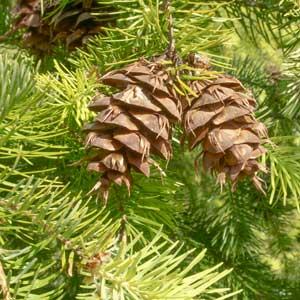
Douglas-fir (Pseudotsuga menziesii)
The Douglas-fir is Oregon’s state tree and one of the most important timber species in North America. It’s recognizable by its pointed needles, deeply furrowed bark and distinctive cones with three-pronged bracts. It can be found widely across Oregon, especially in the western regions.
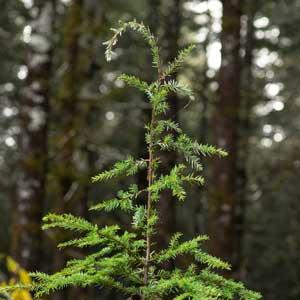
Western hemlock (Tsuga heterophylla)
The western hemlock is a shade-tolerant conifer with soft, flat needles and a characteristic drooping crown. Its bark is reddish-brown and scaly, and it thrives in moist coastal and mountainous forests.
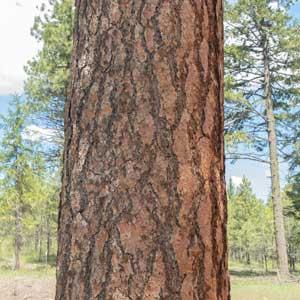
Ponderosa pine (Pinus ponderosa)
Ponderosa pine is known for its long needles grouped in threes and its thick, orange-brown bark with a vanilla-like scent. This drought-resistant pine is a hallmark of Oregon’s dry eastside forests.
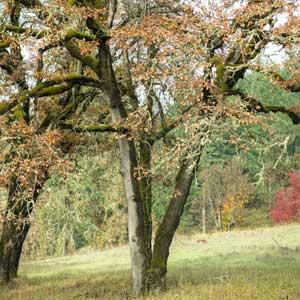
Oregon white oak (Quercus garryana)
The only native oak species in Oregon, the Oregon white oak has deeply lobed leaves and produces acorns that are an important food source for animals. Often found in the Willamette Valley and low-elevation forests, it supports a diverse array of wildlife.
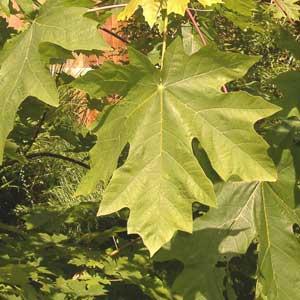
Bigleaf maple (Acer macrophyllum)
The bigleaf maple is a broadleaf tree with the largest leaves of any maple species — up to a foot across! Common in moist western Oregon forests, it’s known for its brilliant fall colors and sweet sap.
You can find a more complete list of native Oregon trees by visiting the Oregon Forest Resources Institute’s tree guide.
ADDITIONAL RESOURCES:
PUBLICATIONS
Trees to Know in Oregon and Washington
This classic guide provides easy-to-follow keys for identifying Oregon’s most common conifer and broadleaf trees. It also includes information on ornamental, shade and fruit trees, making it a versatile resource for any landowner.
Shrubs to Know in Pacific Northwest Forests
Go beyond trees with this detailed publication featuring 100 of the most common shrubs that grow in and around Pacific Northwest forests. A must-have for understanding the understory plants that complement your forest ecosystem.
VIDEOS
Native Trees of Western Oregon
Learn about native trees found throughout western Oregon.
Into the Woods
Broaden and deepen your knowledge of and affinity for Oregon’s local and native trees.
OTHER
Champion Trees National Register
A “champion tree” is the largest tree of a species. Find out how to measure your own champion tree or see others listed here.
Native Trees of the Pacific Northwest: A Geographic Guide
A story map of more than 50 trees and their distribution across the Pacific Northwest.

